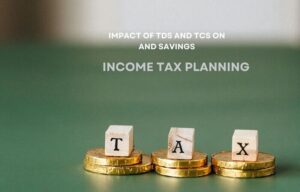7 Frequently Asked Questions about Form 990

A nonprofit organization can have various responsibilities. Among them, filing Form 990 every year is highly important not only to avoid penalties from the IRS but also to maintain their tax-exempt status.
Nonprofits can have numerous questions about Form 990. Here are the answers to some of the common questions they may have.
1. What are the 990 Series forms?
The 990 series includes forms that are intended for different types and sizes of organizations.
- Form 990-N: The e-postcard is intended for smaller nonprofits with gross receipts of $50,000 or less
- Form 990-EZ: The short form intended for organizations with gross receipts < $200,000 and total assets < $500,000
- Form 990: The long form intended for organizations with gross receipts ≥ $200,000 or total assets ≥ $500,000
- Form 990-PF: Intended for private foundations to determine tax based on investment income
- Form 990-T: Intended for tax-exempt organizations to report unrelated business income ($1000 or more)
Note: If you qualify to file Form 990-N or short form 990-EZ, you may voluntarily file long Form 990 instead.
2. What information is required on a 990 form?
Primarily, a 990 return requires an organization’s basic information about the organization, including name, address, and EIN.
Following the filers will need to provide financial information, such as revenue, expenses, assets, and liabilities. They also need to provide details regarding their program service accomplishments, other IRS filings and tax compliance requirements, and details about key personnel, governing body, and management of the organization.
After providing all the information, it’s important for the nonprofits to get their 990 forms signed and authorized by their board members, officers, president, or other authorized members.
3. Are there any additional filing requirements for 990 forms?
Yes! Along with the 990 forms, the nonprofit may be required to attach Schedules to provide any additional information as required by the IRS.
There are 16 Schedules that can be filed with Form 990 based on the organization’s applicability.
- Schedule A: Public charity status and public support
- Schedule B: Schedule of Contributors
- Schedule C: Political campaign and lobbying Activities
- Schedule D: Supplemental Financial Statements
- Schedule E: Schools
- Schedule F: Statement of activities outside the United States
- Schedule G: Supplemental information regarding fundraising or gaming activities
- Schedule H: Hospitals
- Schedule I: Grants and other assistance to organizations, governments, and individuals in the United States
- Schedule J: Compensation information
- Schedule K: Supplemental Information on tax-exempt bonds
- Schedule L: Transactions with interested persons
- Schedule M: Noncash contributions
- Schedule N: Liquidation, termination, dissolution, or significant disposition of assets
- Schedule O: Supplemental information to Form 990
- Schedule R: Related organizations and unrelated partnerships
4. When is the 990 filing deadline?
All the 990 forms (except 990-T) are due on the 15th day of the 5th month after the organization’s tax year ends. That means if an organization runs on a calendar tax year ending in December, it must file a 990 form by May 15th.
For 990-T, the deadlines can be either the 15th day of the 4th month (or) the 5th month, based on the type of organization.
If a due date falls on a weekend or holiday, the deadline will be moved to the next business day.
5. Are there penalties for late filing?
Yes, there are penalties not only for filing a form 990 late but also for filing Form 990 with incorrect or incomplete information.
The amount of penalty varies based on the organization’s size in terms of gross earnings. A penalty of $20 per day past the deadline will be imposed for smaller organizations. Whereas for larger organizations, the penalty can be $105 per day, and it can reach up to $10,500 or 5% of the organization’s annual gross receipts.
It’s important to note that there is no penalty for filing Form 990-N after the deadline, but the IRS will send a reminder. Also, if an organization fails to file Form 990 for 3 consecutive years, the IRS will revoke its tax-exempt status, and this process is termed automatic revocation.
6. Is there any possibility of getting an extension to file Form 990?
Of course! Preparing a 990 form can take more time, and there might be times when nonprofits can’t file their 990 returns within the deadline. In those cases, they can file Form 8868 beforehand and get an extension of 6 months from the IRS to file their 990 returns. The IRS usually doesn’t require any reason for requesting an extension.
7. How do I file a Form 990 return?
As of July 2019, the IRS requires all 990 series returns to be filed electronically. This means the nonprofits will have to use an e-file provider to complete their annual tax returns. It’s important to choose an e-file provider wisely before starting the filing. Here are some of the key things that nonprofits can consider while choosing an e-filing solution:
- IRS-Authorization
- Supported Forms and Schedules
- Features and Services offered
- Pricing and Support system
Considering all these, the nonprofits can pick out their ideal e-filing solution to meet their 990 filing requirements.
Conclusion:
These are all the common questions that nonprofits may have about 990 filings. The answers provided can be more than handy for nonprofits to stay compliant with the IRS filing requirements while keep serving the community!

Olivia Massengale is a content writer for Tax 990. She enjoys writing and creating informative content about tax-exempt e-filing.






